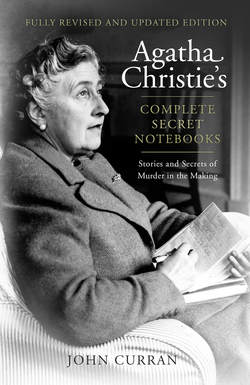Читать книгу Agatha Christie’s Complete Secret Notebooks - Агата Кристи, Agatha Christie, Detection Club The - Страница 59
The crime
ОглавлениеThe crime itself did not feature strongly in the Rules, although Christie enjoyed the challenge of Van Dine 18 below.
Van Dine 7. There simply must be a corpse in a detective novel.
Although the first detective novel, Wilkie Collins’ The Moonstone (1868), concerns a robbery rather than a murder, a mysterious death is the sine qua non of most detective novels. Although she broke this Rule often in her short story output, Christie almost never short-changed her readers in novel form, generously providing a multitude of corpses in And Then There Were None, Death Comes as the End and Endless Night – but there is no corpse discovered in Five Little Pigs.
Van Dine 18. A crime in a detective story must never turn out to be an accident or a suicide.
The rejection of this Rule could mean a huge disappointment for a reader who discovers, after 250 pages, that the death under investigation is not a crime at all. See how cleverly Agatha Christie overcomes this in Taken at the Flood, when none of the deaths is what it first seems. The seeming murder of ‘Enoch Arden’ is an accident, the death of Major Porter is suicide and the seeming suicide of Rosaleen Cloade is murder. In one brilliant plot she effortlessly breaks both aspects of Van Dine’s Rule. In the Poirot cases ‘The Market Basing Mystery’ and ‘Murder in the Mews’ – both essentially the same story, the latter being a more elaborate version, of the former – we have not murder disguised to look like suicide but suicide disguised to look like murder. But there is another twist; the real murder plan is to get someone else hanged (and therefore murdered) for a crime they did not commit.
Van Dine 19. The motives for all the crimes in detective stories should be personal.
This Rule essentially outlawed murder committed for ideological reasons, with Van Dine suggesting that such murders should be confined to secret-service stories. Appropriately, this type of plot does feature in some of Christie’s international thriller novels – They Came to Baghdad, Destination Unknown, Passenger to Frankfurt – as well as some of the early titles – The Secret Adversary, The Secret of Chimneys – but it is not a feature of her detective fiction. But into which category does the motive for the first murder in Three Act Tragedy fall?
